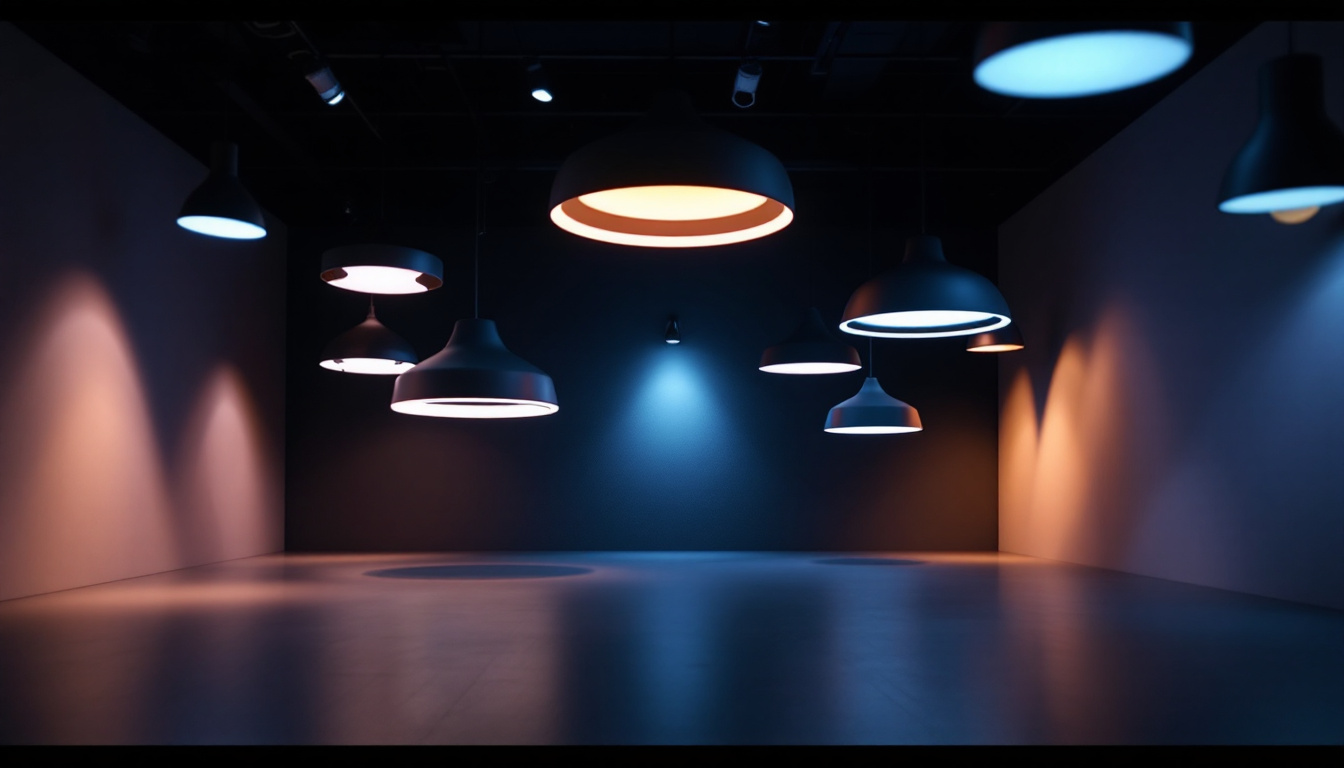
Photoelectric sensors are devices that detect changes in light levels and are commonly used in outdoor lighting applications. These sensors play a crucial role in automating lighting systems, making them more efficient and user-friendly. By harnessing the power of natural light, they can significantly reduce energy consumption while enhancing the functionality of outdoor lighting.
For lighting contractors, understanding how photoelectric sensors work is essential. These sensors typically operate using a light-sensitive element that detects ambient light levels. When the light drops below a certain threshold, the sensor activates the connected lighting system, ensuring that outdoor areas remain illuminated when needed. This technology not only improves safety but also adds convenience for homeowners and businesses alike. Furthermore, the integration of photoelectric sensors into smart home systems allows for even greater control, enabling users to customize lighting schedules and settings through mobile applications or voice commands, thus blending technology seamlessly into everyday life.
There are several types of photoelectric sensors available on the market, each designed for specific applications. The most common types include:
Understanding these variations allows lighting contractors to recommend the most suitable option for their clients’ specific needs, ultimately enhancing customer satisfaction. Additionally, some advanced models come equipped with features such as adjustable sensitivity and delay settings, allowing for further customization based on environmental conditions and user preferences. This adaptability is particularly beneficial in areas with fluctuating light levels, such as regions with dense tree cover or variable weather patterns, where reliable lighting is paramount for safety and security.
Integrating photoelectric sensors into outdoor lighting systems offers numerous benefits, both for contractors and their clients. These advantages can lead to increased business opportunities and improved client relationships.
One of the most significant benefits of photoelectric sensors is their ability to enhance energy efficiency. By ensuring that outdoor lights are only activated when necessary, these sensors help reduce electricity consumption. This not only lowers utility bills for homeowners but also contributes to environmental sustainability.
For lighting contractors, promoting energy-efficient solutions can be a strong selling point. Clients are increasingly looking for ways to reduce their carbon footprint, and offering photoelectric sensors as part of an outdoor lighting package can set a contractor apart from the competition. Additionally, many regions offer incentives or rebates for energy-efficient installations, which can further entice clients to choose these advanced lighting solutions.
Outdoor lighting plays a vital role in enhancing security for homes and businesses. Photoelectric sensors contribute to this by ensuring that areas are well-lit during the night, deterring potential intruders. When lights automatically activate in response to low light levels, it creates a safer environment for residents and visitors.
Contractors can emphasize the security benefits of photoelectric sensors when discussing outdoor lighting options with clients. Highlighting how these sensors can improve safety and peace of mind can lead to increased sales and a stronger reputation in the community. Furthermore, the integration of photoelectric sensors with security systems can provide an added layer of protection, as lights can be programmed to flash or change intensity in response to security alerts, thereby enhancing the overall security strategy for a property.
Another advantage of photoelectric sensors is the convenience they offer. Homeowners no longer need to remember to turn lights on and off at specific times; the sensors handle this automatically. This automation not only enhances user experience but also encourages clients to utilize outdoor lighting more frequently.
For contractors, promoting the convenience of photoelectric sensors can lead to more installations and greater customer satisfaction. Clients appreciate solutions that simplify their lives, making them more likely to recommend the contractor to others. Additionally, the ability to integrate these sensors with smart home systems allows for even greater control and customization. Homeowners can adjust settings remotely, schedule lighting patterns, or even receive notifications when lights are activated, making outdoor lighting not just a functional necessity, but a sophisticated component of modern home automation.
For lighting contractors looking to incorporate photoelectric sensors into their projects, understanding best practices is essential. Proper integration can maximize the benefits of these devices while ensuring client satisfaction.
Before installing photoelectric sensors, conducting a thorough site assessment is crucial. This involves evaluating the specific lighting needs of the area, considering factors such as the amount of natural light available and the layout of the property. Understanding these elements will help determine the optimal placement of sensors to ensure they function effectively.
During the assessment, contractors should also discuss the client’s preferences and any specific requirements they may have. This collaborative approach can lead to a more tailored solution that meets the client’s needs while maximizing the benefits of photoelectric technology.
Once the site assessment is complete, selecting the appropriate type of photoelectric sensor is the next step. Contractors should consider factors such as the location, the type of lighting being used, and the specific needs of the client. For instance, a motion sensor may be ideal for a driveway, while a twilight sensor might be better suited for garden lighting.
Providing clients with options and explaining the differences between various sensors can enhance their understanding and confidence in the chosen solution. This transparency can lead to stronger client relationships and increased trust in the contractor’s expertise.
Proper installation and calibration of photoelectric sensors are critical to their performance. Contractors should follow manufacturer guidelines to ensure that sensors are installed in the correct orientation and position. Additionally, calibration may be necessary to adjust the light threshold settings based on the specific environment.
Taking the time to ensure that sensors are correctly installed and calibrated can prevent future issues and enhance client satisfaction. A well-functioning system will not only meet the client’s expectations but also reflect positively on the contractor’s professionalism and attention to detail.
Effectively marketing photoelectric sensors can significantly impact a lighting contractor’s business. By highlighting the benefits and features of these devices, contractors can attract more clients and increase sales.
Creating educational content about photoelectric sensors can be an effective way to inform potential clients. This could include blog posts, videos, or infographics that explain how the technology works, its benefits, and how it can enhance outdoor lighting systems.
By positioning themselves as knowledgeable experts in the field, contractors can build trust with potential clients. This educational approach not only informs but also encourages clients to consider photoelectric sensors as a viable option for their outdoor lighting needs.
Another effective marketing strategy is showcasing successful projects that utilized photoelectric sensors. Highlighting before-and-after photos, client testimonials, and specific outcomes can demonstrate the value of these devices in real-world applications.
Visual storytelling can be a powerful tool in marketing. By sharing success stories, contractors can inspire potential clients to envision how photoelectric sensors could enhance their outdoor spaces, ultimately leading to increased inquiries and sales.
To encourage clients to consider photoelectric sensors, contractors can offer promotions or package deals that include these devices as part of their outdoor lighting installations. This could involve discounts, bundled services, or limited-time offers that make the investment more appealing.
Promotions can create a sense of urgency and encourage clients to take action. By framing photoelectric sensors as an essential component of a comprehensive outdoor lighting solution, contractors can boost sales and enhance their reputation as a forward-thinking business.
While the benefits of photoelectric sensors are numerous, there are also challenges and considerations that lighting contractors should be aware of. Understanding these factors can help contractors navigate potential obstacles and provide the best solutions for their clients.
Environmental factors can significantly impact the performance of photoelectric sensors. For instance, areas with excessive streetlights or nearby structures may create light pollution, affecting the sensor’s ability to accurately detect ambient light levels. Contractors should consider these factors during the site assessment and installation process.
In some cases, it may be necessary to adjust the sensor’s sensitivity or placement to ensure optimal performance. Being proactive in addressing these challenges can prevent future issues and enhance client satisfaction.
Educating clients about the functionality and limitations of photoelectric sensors is essential. Some clients may have misconceptions about how these devices work or may expect them to function flawlessly in all conditions. Setting realistic expectations can prevent misunderstandings and ensure that clients are satisfied with their lighting systems.
Providing clear information about how to operate and maintain the sensors can also empower clients to make the most of their outdoor lighting systems. This approach fosters a sense of partnership between the contractor and the client, ultimately leading to stronger relationships.
Photoelectric sensors offer lighting contractors a valuable opportunity to enhance their business while providing clients with efficient, convenient, and secure outdoor lighting solutions. By understanding the technology, integrating it effectively into projects, and marketing its benefits, contractors can set themselves apart in a competitive industry.
As clients increasingly seek energy-efficient and automated solutions, embracing photoelectric sensors can position lighting contractors as leaders in innovation. By staying informed about the latest advancements and best practices, contractors can continue to grow their business and meet the evolving needs of their clients.
Ready to elevate your lighting projects with the efficiency and innovation of photoelectric sensors? LumenWholesale is here to support your business with an extensive selection of high-quality, spec-grade lighting products at unbeatable wholesale prices. Say goodbye to inflated markups and hello to reliable, high-performance lighting that meets the highest industry standards. Plus, with free shipping on bulk orders, you can enjoy the best value without any hidden fees. Don’t compromise on quality or affordability. Experience the convenience of shopping with LumenWholesale today and bring superior lighting solutions to your clients. Wholesale Lighting at the Best Value.

Discover how outdoor lamp lights are revolutionizing the efficiency of lighting contractors.

Explore the science behind LED high hats and discover how they revolutionize lighting solutions for contractors.

Discover essential tips for selecting the perfect LED light kit and learn how to sidestep common pitfalls in your lighting projects.

Explore the transformative impact of 5000K lumen lighting on modern design and installation.